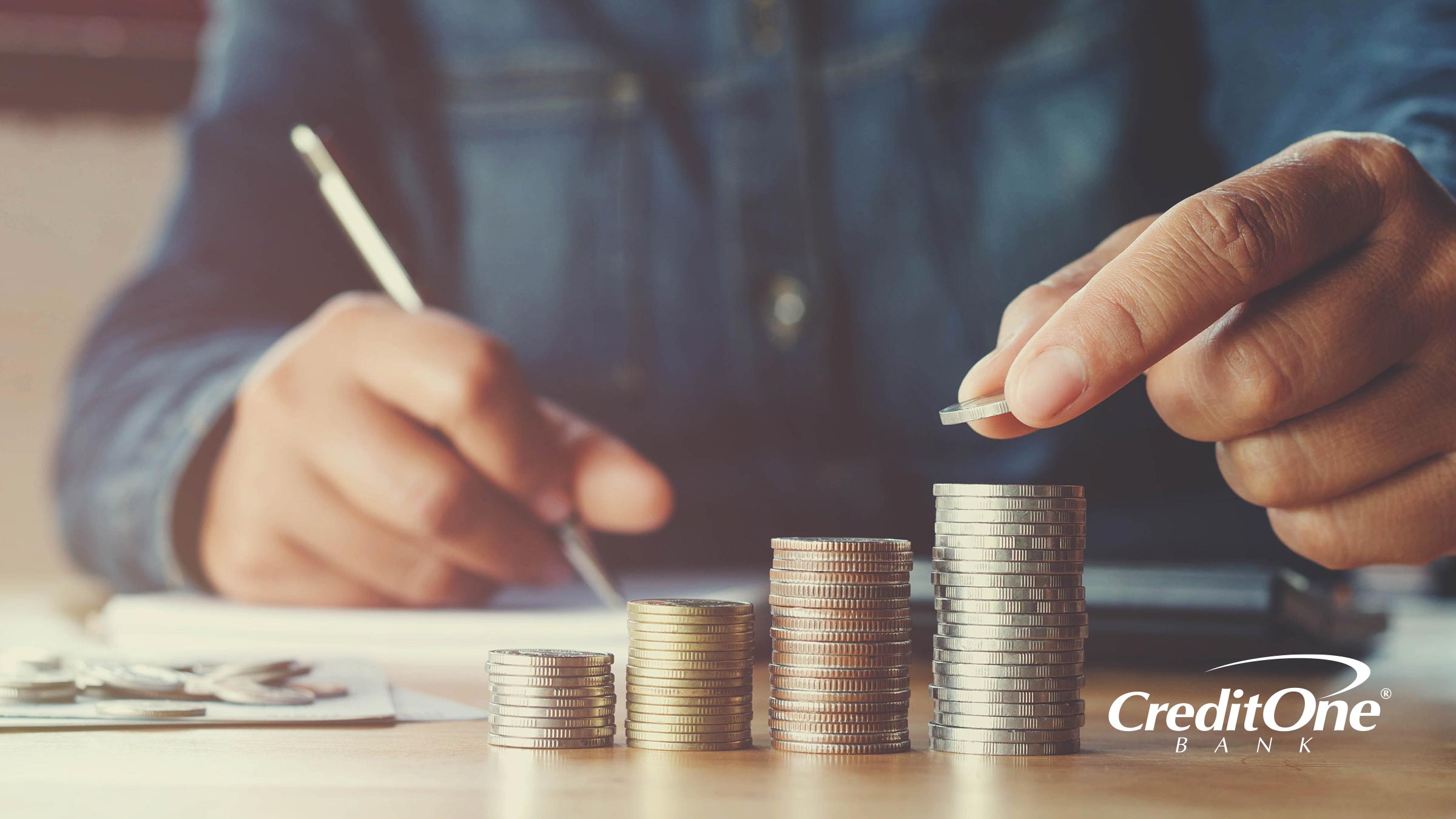Working toward financial stability can be a daunting task, but developing healthy spending habits and practicing smart saving can make it easier to plan for the future and take control of your finances.
Help improve your financial stability and security with these tips from the experts at Credit One Bank.
Create a Spending Plan and Budget
By building a budget and examining your spending habits, you should be able to see exactly how much money you have coming in and where—or on what—you’re spending it. This is often the first step toward meeting short- and long-term financial goals, whether they involve taking a vacation, paying off debt, buying a new house, or saving for retirement.
Add up your household income, including paychecks and other income such as investments or rental property, and then figure your monthly expenses starting with recurring bills like rent or mortgage, car payments, insurance, utilities, and subscriptions. Also account for variable expenses like gas, groceries, and entertainment. Once you have your income and expenses calculated, look for places you may be able to cut back to help meet your financial goals. Don’t forget to be flexible; your budget and spending will likely change along with your needs and situation.
Earn Rewards on Everyday Purchases
You can stretch your budget further by taking advantage of credit card rewards offered by your credit card issuer. For example, some credit cards provide cash back rewards for specific everyday purchases. The Credit One Bank Platinum Rewards Visa is one such card. Card members earn 5% cash back rewards for the first $5,000 of eligible purchases per year on gas, groceries, internet, cable, satellite TV, and mobile phone services, then 1% thereafter. Plus, receive 1% cash back rewards on all other purchases.
“Make sure your rewards are working for you – and not just as a gimmicky signup bonus,” said Credit One Bank Senior Vice President of Digital Banking Customer Engagement David Herpers. “Find a credit card that continues to give you more for your everyday spending habits.”
Compare Interest Rates When Opening a Savings Account
When selecting a savings account, look for the highest yield but also consider other factors such as the minimum balance requirement, any introductory rates that may expire after a set period of time, and the ease with which you’re able to access your money and account information. Often, digital banks can offer higher interest rates than traditional brick-and-mortar branches due to lower overhead costs. Ensure that any bank you consider is a member of the Federal Deposit Insurance Corporation (FDIC) so your money is protected up to $250,000 per account owner per insured bank.
Build an Emergency Fund
Emergency funds create a financial buffer that could help keep you afloat in times of need. These funds can be used to pay for unexpected expenses such as medical bills, car repairs, home appliance repair or replacement, or unforeseen circumstances like a job loss or death in the family.
To build your emergency fund, set a monthly savings goal—even a nominal amount, like $50 per paycheck, can make an impact over time. Also consider setting up a way for the funds to be automatically transferred to your emergency fund account each time you get paid to make the task simpler and less daunting. Check on the account periodically and adjust how much you’re contributing if necessary or your budget allows. A good rule of thumb is to set aside 3 - 6 months’ worth of living expenses.
Keep Track of Your Credit
Your credit score provides potential lenders and other parties a quick way to get a better idea of your “creditworthiness,” including your financial history and your ability to pay. Having a good credit score may result in better interest rates and/or make it easier to get approval on loans, rent an apartment, take out a mortgage, or finance large purchases. Poor credit could saddle you with higher interest rates, less favorable loan terms, or even result in an application for a loan or credit card being denied.
To help you better understand how different actions affect your credit score, there are many online sites that offer free credit scores and tools that allow you to stay up-to-date or even track your score over time. Be sure to check reviews and verify a site’s legitimacy before entering your personal information. Additionally, many credit card issuers, including Credit One Bank, provide free access to online credit scores on a regular basis to give card members an easy way to track and manage their credit.
Take Advantage of Emerging Card Technology
Methods of payment, like credit and debit cards, have now been around for decades and have grown in popularity due to their convenience and other advantages they offer over cash. As credit and debit card technology grows, so too do the benefits credit and debit cards offer, especially when it comes to security. More secure transactions could save you money, time, and headaches by hopefully preventing your personal information from being compromised and used for identity theft or to make unauthorized purchases.
EMV chip-equipped cards utilize smart technology to store data on the microchip embedded in the card. These chips provide an extra level of security by generating a one-time code for each transaction made with the card. So, even if a hacker were to obtain the information from an EMV point-of-sale transaction, they shouldn’t be able to use that information to clone fraudulent cards. This makes EMV chips more secure than the magnetic stripes on credit and debit cards.
Contactless cards are equipped with near-field communication technology that allows payments to be made at a terminal without having to swipe or insert the card. Because you simply tap the card to the terminal’s sensor—or wave it close to the sensor—these transactions are typically even faster than with an EMV chip. Contactless cards also create a one-time code unique to each transaction, so they are as secure as EMV chip-equipped cards.
Smart device payments can be made by adding your credit or debit card to the wallet app of your smartphone or tablet. Apps can also be added to some smartwatches to make contactless payments at participating merchants.
Money is a tool, and the key to getting the most out of a tool is using it correctly and optimally. Trying some of these tips could result in gains that inspire you to go even further to get more from your money.



